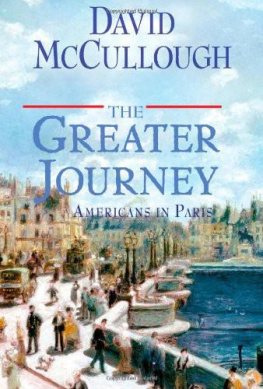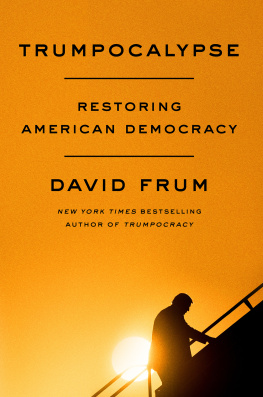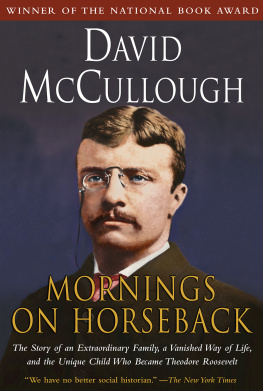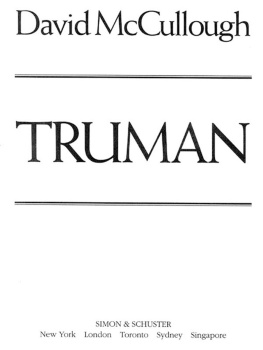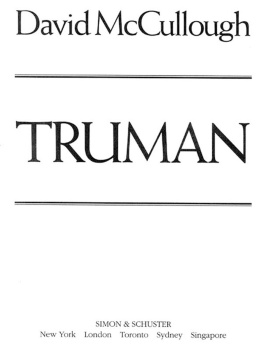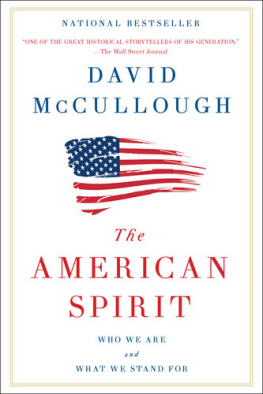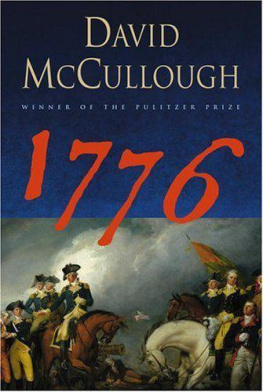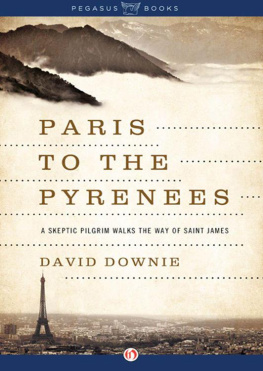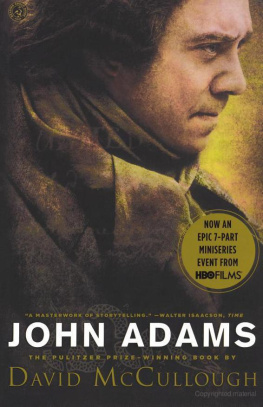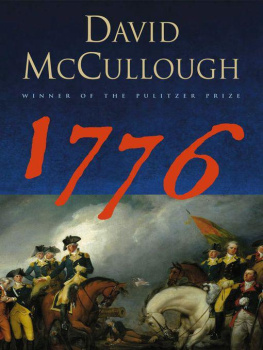


ALSO BY
DAVID MCCULLOUGH
1776
John Adams
Truman
Brave Companions
Mornings on Horseback
The Path Between the Seas
The Great Bridge
The Johnstown Flood



SIMON & SCHUSTER
1230 Avenue of the Americas
New York, NY 10020
www.SimonandSchuster.com
Copyright 2011 by David McCullough
All rights reserved, including the right to reproduce this book or portions thereof in any form whatsoever. For information address Simon & Schuster Subsidiary Rights Department, 1230 Avenue of the Americas, New York, NY 10020
First Simon & Schuster hardcover edition May 2011
SIMON & SCHUSTER and colophon are registered trademarks of Simon & Schuster, Inc.
Designed by Amy Hill
Manufactured in the United States of America
1 3 5 7 9 10 8 6 4 2
Library of Congress Cataloging-in-Publication Data
McCullough, David G.
The greater journey : Americans in Paris/
David McCullough. 1st Simon & Schuster hardcover ed.
p. cm
Includes bibliographical references and index.
1. AmericansFranceParisHistory19th century.
2. IntellectualsFranceParisHistory19th century.
3. ArtistsFranceParisHistory19th century.
4. Authors, AmericanFranceParisHistory19th century.
5. PhysiciansFranceParisHistory19th century.
6. Paris (France)Intellectual life19th century.
7. AmericansFranceParisBiography 8. Paris (France)Biography.
9. Paris (France)RelationsUnited States.
10. United StatesRelationsFranceParis. I. Title.
DC718.A44M39 2011
920.009213044361dc22 2010053001
ISBN 978-1-4165-7176-6
ISBN 978-1-4165-7689-1 (ebook)
The illustration facing the title page is Man at the Window by Gustave Caillebotte; on p. 1: the exterior of Notre-Dame; on p. 137: the Place Vendme; on p. 265: the Eiffel Tower under construction. The front endpaper is the rue de Rivoli; the back endpaper is avenue de lOpra.
Pages 559-560 constitute an extension of the copyright page.
For Rosalee
For we constantly deal with practical problems, with moulders, contractors, derricks, stonemen, trucks, rubbish, plasterers, and what-not-else, all the while trying to soar into the blue.
AUGUSTUS SAINT-GAUDENS
CONTENTS





PART I


CHAPTER ONE

THE WAY OVER
The thought of going abroad makes my heart leap.
CHARLES SUMNER
I
They spoke of it then as the dream of a lifetime, and for many, for all the difficulties and setbacks encountered, it was to be one of the best times ever.
They were the first wave of talented, aspiring Americans bound for Paris in what, by the 1830s, had become steadily increasing numbers. They were not embarking in any diplomatic or official capacitynot as had, say, Benjamin Franklin or John Adams or Thomas Jefferson, in earlier days. Neither were they in the employ of a manufacturer or mercantile concern. Only one, a young writer, appears to have been in anybodys pay, and in his case it was a stipend from a New York newspaper. They did not see themselves as refugees or self-imposed exiles from an unacceptable homeland. Nor should they be pictured as traveling for pleasure only, or in expectation of making some sort of social splash abroad.
They had other purposesquite specific, serious pursuits in nearly every case. Their hopes were high. They were ambitious to excel in work that mattered greatly to them, and they saw time in Paris, the experience of Paris, as essential to achieving that dreamthough, to be sure, as James Fenimore Cooper observed when giving his reasons for needing time in Paris, there was always the possibility of a little pleasure concealed in the bottom of the cup.
They came from Boston, New York, Philadelphia, Ohio, North Carolina, Louisiana, nearly all of the twenty-four states that then constituted their country. With few exceptions, they were well educated and reasonably well off, or their parents were. Most, though not all, were single men in their twenties, and of a variety of shapes and sizes. Oliver Wendell Holmes, as an example, was a small, gentle, smiling Bostonian who looked even younger than his age, which was twenty-five. His height, as he acknowledged good-naturedly, was five feet three inches when standing in a pair of substantial boots. By contrast, his friend Charles Sumner, who was two years younger, stood a gaunt six feet two, and with his sonorous voice and serious brow appeared beyond his twenties.
A few, a half dozen or so, were older than the rest by ten years or more, and they included three who had already attained considerable reputation. The works of James Fenimore Cooper, and especially The Last of the Mohicans , had made him the best-known American novelist ever. Samuel F. B. Morse was an accomplished portrait painter. Emma Willard, founder of Emma Willards Troy Female Seminary, was the first woman to have taken a public stand for higher education for American women.
Importantly also, each of these three had played a prominent part in the triumphant return to the United States of the Marquis de Lafayette in 1824. Cooper had helped organize the stupendous welcome given Lafayette on his arrival in New York. Morse had painted Lafayettes portrait for the City of New York, and a visit to Emma Willards school at Troy had been a high point of Lafayettes tour of the Hudson Valley. All three openly adored the old hero, and a desire to see him again had figured in each of their decisions to sail for France.
Cooper had departed well ahead of the others, in 1826, when he was thirty-seven, and had taken with him his wife and five children ranging in age from two to thirteen, as well as a sixteen-year-old nephew. For a whole family to brave the North Atlantic in that day was highly unusual, and especially with children so young. My dear mother was rather alarmed at the idea, the oldest of them, Sue, would remember. According to Cooper, they were bound for Europe in the hope of improving his healthhis stomach and spleen had got entirely out of trimbut also to benefit the childrens education.
Next page
